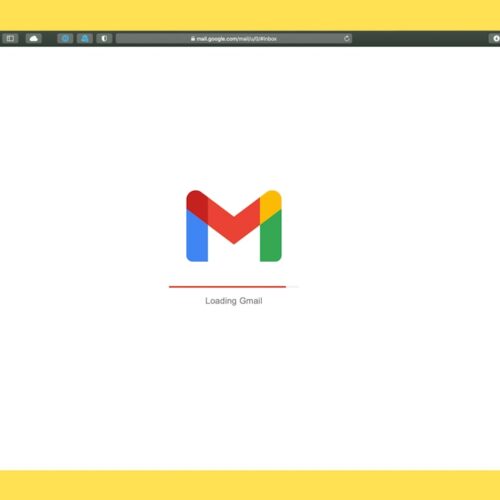Email marketing is a digital marketing strategy that involves sending commercial messages to a group of people via email. It is a direct form of communication that allows businesses to reach their target audience and promote their products or services. Email marketing has been around for decades, with the first email marketing campaign sent in 1978 by Gary Thuerk, a marketer at Digital Equipment Corporation. Since then, email marketing has evolved and become an essential tool for businesses in today’s digital age.
In today’s digital age, where people are constantly connected to their email accounts, email marketing has become an integral part of any successful marketing strategy. With the rise of social media and other digital channels, some may argue that email marketing is no longer relevant. However, this couldn’t be further from the truth. Email marketing continues to be one of the most effective ways for businesses to engage with their audience and drive conversions.
Key Takeaways
- Email marketing is a powerful tool for businesses to reach and engage with their audience.
- Understanding your target audience is crucial for effective email marketing.
- Compelling subject lines and attention-grabbing content are key to getting recipients to open and engage with your emails.
- Eye-catching templates and personalized communication can further enhance the effectiveness of your email marketing.
- Measuring success through analytics and following best practices can help businesses optimize their email marketing campaigns.
Importance of Email Marketing for Businesses
One of the main reasons why email marketing is so important for businesses is its cost-effectiveness. Compared to other marketing channels such as print or television advertising, email marketing is relatively inexpensive. Businesses can reach a large audience with minimal investment, making it an attractive option for companies of all sizes.
Another key advantage of email marketing is its ability to reach a large audience. With billions of people using email worldwide, businesses have the opportunity to connect with a vast number of potential customers. By building an email list and sending targeted campaigns, businesses can ensure that their message reaches the right people at the right time.
Furthermore, email marketing offers a high return on investment (ROI) compared to other marketing channels. According to a study by the Direct Marketing Association, every $1 spent on email marketing generates an average return of $42. This high ROI is due to the fact that email allows businesses to directly communicate with their audience and drive conversions.
Additionally, email marketing provides businesses with the ability to track and measure their results. With email marketing software, businesses can track metrics such as open rates, click-through rates, and conversion rates. This data allows businesses to analyze the effectiveness of their campaigns and make data-driven decisions to improve their results.
Understanding Your Target Audience for Effective Email Marketing
In order to create effective email marketing campaigns, it is crucial for businesses to understand their target audience. Knowing your audience allows you to tailor your messages and offers to their specific needs and interests, increasing the chances of engagement and conversion.
There are several ways to gather data on your audience. One of the most common methods is through website analytics. By analyzing data such as demographics, behavior, and interests, businesses can gain valuable insights into their audience’s preferences and habits. Another method is through surveys or feedback forms, where businesses can directly ask their audience about their preferences and interests.
Once you have gathered data on your audience, it is important to segment your email list and personalize your messages. Segmentation involves dividing your email list into smaller groups based on specific criteria such as demographics or purchase history. This allows you to send targeted campaigns that are more relevant to each segment. Personalization involves customizing your messages with the recipient’s name or other personalized information. This creates a sense of familiarity and increases the chances of engagement.
Crafting Compelling Email Subject Lines
The subject line of an email is one of the most important elements of an email marketing campaign. It is the first thing that recipients see when they receive an email, and it plays a crucial role in determining whether they will open the email or not.
To write effective subject lines, it is important to keep them concise and compelling. A good subject line should be clear and concise, giving recipients a preview of what the email is about. It should also be compelling enough to grab their attention and make them want to open the email.
There are several tips for writing effective subject lines. One tip is to use action words or power words that create a sense of urgency or excitement. For example, words like “limited time offer” or “exclusive discount” can entice recipients to open the email. Another tip is to personalize the subject line by including the recipient’s name or other personalized information. This creates a sense of familiarity and increases the chances of engagement.
Examples of successful subject lines include “Last chance to save 50% off your favorite products” or “John, don’t miss out on our exclusive offer just for you”. These subject lines are concise, compelling, and personalized, making them more likely to grab the recipient’s attention and drive them to open the email.
Creating Attention-Grabbing Email Content
While the subject line is important for getting recipients to open the email, the content of the email is what keeps them engaged and drives them to take action. Therefore, it is crucial to create attention-grabbing email content that is relevant, valuable, and engaging.
The content of an email should be tailored to the recipient’s needs and interests. It should provide valuable information or offers that are relevant to their specific needs. For example, if you are a clothing retailer, you could send emails with styling tips or exclusive discounts on new arrivals.
In addition to being relevant, email content should also be engaging. This can be achieved through the use of compelling visuals such as images or videos, as well as through storytelling or personalization. By creating content that resonates with the recipient and evokes emotions, businesses can increase the chances of engagement and conversion.
Examples of successful email content include product recommendations based on previous purchases, customer testimonials or success stories, or educational content that provides valuable information or tips. These types of content are not only relevant and valuable but also engaging, making them more likely to drive recipients to take action.
Designing Eye-Catching Email Templates

In addition to the content, the design of an email template plays a crucial role in the success of an email marketing campaign. A well-designed email template can grab the recipient’s attention, convey the brand’s message, and drive them to take action.
The design of an email template should be consistent with the brand’s visual identity. This includes using the brand’s colors, fonts, and logo, as well as maintaining a consistent layout and style. Consistency in design helps to build brand recognition and trust, making recipients more likely to engage with the email.
When designing an email template, it is important to keep it simple and easy to read. Avoid cluttering the email with too much text or images, as this can overwhelm the recipient and make it difficult for them to understand the message. Instead, use white space and clear headings to make the content easy to scan and digest.
Examples of successful email templates include clean and minimalist designs that are visually appealing and easy to read. These templates often use a combination of text and images to convey the message, with clear call-to-actions that stand out and drive recipients to take action.
Personalizing Email Communication with Customers
Personalization is a key element of effective email marketing. By personalizing your email communication with customers, you can create a more personalized experience that resonates with them and increases the chances of engagement and conversion.
Personalization can be achieved through various methods. One method is by including the recipient’s name or other personalized information in the email. This creates a sense of familiarity and makes the recipient feel valued and appreciated.
Another method is by segmenting your email list and sending targeted campaigns based on specific criteria such as demographics or purchase history. By sending emails that are relevant to each segment, you can increase the chances of engagement and conversion.
Examples of successful personalized emails include birthday emails that offer special discounts or rewards, abandoned cart emails that remind recipients of items they left in their cart, or re-engagement emails that target inactive subscribers with special offers or incentives. These types of emails are personalized and tailored to the recipient’s specific needs and interests, making them more likely to drive engagement and conversion.
Implementing Effective Call-to-Actions in Emails
A call-to-action (CTA) is a crucial element of an email marketing campaign. It is the part of the email that tells the recipient what action to take, whether it is to make a purchase, sign up for a newsletter, or download a resource.
The importance of call-to-actions in email marketing cannot be overstated. A well-designed and compelling CTA can drive recipients to take action and convert them into customers. On the other hand, a poorly designed or unclear CTA can confuse or frustrate recipients, leading them to ignore or delete the email.
When creating effective CTAs, it is important to make them clear and concise. Use action words that tell the recipient exactly what they need to do, such as “Shop now”, “Sign up”, or “Download now”. Use contrasting colors or buttons to make the CTA stand out and draw attention.
Examples of successful CTAs include “Get 50% off now”, “Join our mailing list for exclusive offers”, or “Download our free e-book”. These CTAs are clear, compelling, and provide a clear benefit or incentive for the recipient to take action.
Measuring Email Marketing Success with Analytics
Measuring the success of your email marketing campaigns is crucial for improving your results and optimizing your strategies. By tracking and analyzing key metrics, you can gain valuable insights into the effectiveness of your campaigns and make data-driven decisions to improve your results.
There are several metrics that you should track in email marketing. One of the most important metrics is the open rate, which measures the percentage of recipients who open your email. A high open rate indicates that your subject lines are effective and that recipients are interested in your content.
Another important metric is the click-through rate, which measures the percentage of recipients who click on a link or CTA in your email. A high click-through rate indicates that your content and CTAs are engaging and compelling, and that recipients are taking the desired action.
Other metrics to track include the conversion rate, which measures the percentage of recipients who complete a desired action such as making a purchase or signing up for a newsletter, and the unsubscribe rate, which measures the percentage of recipients who unsubscribe from your email list.
There are several tools available for measuring email marketing success. Most email marketing software platforms provide built-in analytics that allow you to track and analyze key metrics. Additionally, there are third-party tools such as Google Analytics that can provide more advanced tracking and analysis capabilities.
Best Practices for Email Marketing: Dos and Don’ts
To ensure the success of your email marketing campaigns, it is important to follow best practices and avoid common mistakes. Here are some dos and don’ts of email marketing:
Dos:
– Do segment your email list and send targeted campaigns based on specific criteria.
– Do personalize your emails with the recipient’s name or other personalized information.
– Do test different subject lines, content, and designs to see what works best for your audience.
– Do use clear and compelling call-to-actions that tell the recipient exactly what action to take.
– Do track and analyze key metrics to measure the success of your campaigns and make data-driven decisions.
Don’ts:
– Don’t buy email lists or send unsolicited emails. This can damage your reputation and result in low engagement rates.
– Don’t send too many emails or bombard your subscribers with irrelevant content. This can lead to high unsubscribe rates.
– Don’t neglect mobile optimization. With more people accessing their emails on mobile devices, it is crucial to ensure that your emails are mobile-friendly.
– Don’t forget to comply with email marketing regulations such as the CAN-SPAM Act. This includes providing an unsubscribe option and including your physical address in the email.
Examples of successful email marketing campaigns include Airbnb’s personalized emails that recommend unique accommodations based on the recipient’s previous searches, or Spotify’s personalized emails that provide personalized playlists based on the recipient’s music preferences. These campaigns are not only personalized and tailored to the recipient’s specific needs and interests but also engaging and compelling, making them more likely to drive engagement and conversion.
In conclusion, email marketing continues to be an essential tool for businesses in today’s digital age. Its cost-effectiveness, ability to reach a large audience, high ROI, and ability to track and measure results make it a valuable marketing channel for businesses of all sizes. By understanding their target audience, crafting compelling subject lines and content, designing eye-catching templates, personalizing their communication, implementing effective CTAs, and measuring their success with analytics, businesses can create successful email marketing campaigns that drive engagement and conversion. With the right strategies and best practices in place, email marketing can be a powerful tool for businesses to connect with their audience and achieve their marketing goals.
Looking to improve your email marketing strategy? Check out this informative article on email marketing best practices from SolveCopy. They provide valuable insights and tips to help you optimize your email campaigns and drive better results. Whether you’re a beginner or an experienced marketer, this article is a must-read for anyone looking to enhance their email marketing efforts. Don’t miss out on this valuable resource! Read more here.


